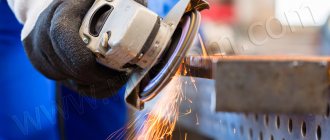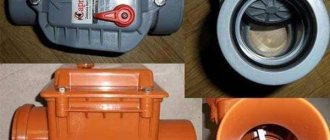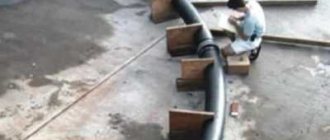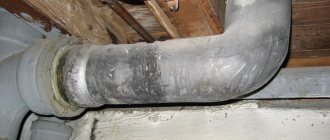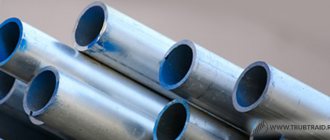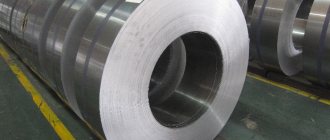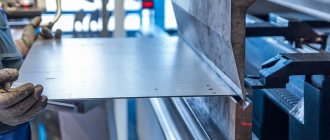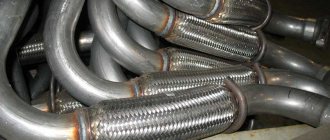When renovating, many people try to replace all outdated communications at once. It turns out that the most difficult thing to work with is cast iron sewer pipes that need to be dismantled. Previously, they were connected using cement, sulfur or aluminum. It turns out that the system was carried out for centuries. But now the end of the century has come. And at the same time, difficult work begins.
At first glance, it may seem that removing cast iron pipes is very easy. But here you need to work wisely. After all, if you apply too much force, you can damage the riser that connects several apartments at once. In this case, the anger of the neighbors is inevitable. There will be costs, time and a lot of work.
Before you start dismantling an old cast iron pipe, you need to familiarize yourself with some rules:
- turn off the water supply in the house;
- remove the hose from the flush tank on the toilet;
- clean the toilet carefully;
- remove from the premises all devices and objects that may interfere with the work;
- Cast iron is a brittle material. Pipes that are located far from the riser can be broken with a hammer;
- removal of pipes that directly approach the riser;
- Cuffs are installed on the bell. First, the bell is cleaned of lubricants.
What is the best way to cut a cast iron pipe? Dismantling a cast iron pipe. Hacksaw for metal
Most often, the need to cut a cast iron structure arises when dismantling outdated communications. The hope for a speedy completion of the work collapses immediately - in the Soviet Union, pipes were connected with cement, sulfur and aluminum, so cutting them is incredibly difficult. But a couple of working methods are known. You will learn about how to cut cast iron and structures made from it from the material below.
As with any metal, methods for cutting cast iron are divided into thermal and mechanical. The choice of a specific tool depends on the design features. The following is equipment that saws (or cuts) cast iron:
- pipe cutter;
- angle grinder;
- chisel;
- jigsaw
- plasma installation;
- gas cutters.
Now it’s worth evaluating cutting using the mentioned tools with objects made of cast iron.
Angle grinder
Working with an angle grinder is quick and convenient, but not without its drawbacks. For example, it only cuts in a straight line. An attempt to make a curved cut will result in the disc being “bitten”, breaking, and possible injury to the user. Therefore, the machine is used for straight cutting. Another disadvantage is the fire hazard of the method (abrasive disc + metal = sparking). Before work, you will have to wear goggles, protection for your face and hands.
Cutting with a circle is more efficient than with a jigsaw, which is why users often choose a noisy grinder. When buying a cutting wheel, prefer products with a bakelite bond, because they are much stronger than their ceramic counterparts.
Gas cutting
Oxygen gas cutting is effective, but limited by the thickness of the metal. If you need to improve the quality of the cut, then you should look towards cutting cast iron using the oxygen-flux method.
An example of cutting cast iron with a supersonic cutter Terminator 220:
It is even suitable for working underwater.
Thermal cutter mobile units have proven themselves well. For example, the simplest model 2M (weight less than 5 kg) cuts cast iron (without introducing a torch into the cutting cavity) by 150 mm. Information from the developer:
Oxygen spear cutting. An oxygen lance is a steel tube through which oxygen is passed. The working end of the oxygen lance is heated to 1350°C (for example, with a welding torch), then oxygen is pressurized, which ignites at the end of the lance and reaches a temperature of 2000°C. To increase the power of the spear, a steel rod is placed inside the tube.
Plasma cutting of cast iron is the most productive option, but it is also the most expensive.
Source
Oxygen-flux metal cutting technology
Unlike other methods, the oxygen-flux cutting technique is 15-20% more effective due to the power of the flame, as well as the lack of additional heating of the metal and alloys. This method is much more effective than previously used methods. The high processing speed used in this technology allows you to obtain a clean cut of high quality. Most often, flux with thermomechanical or mechanical properties is used. In some cases, 10% aluminum is added to iron filings to improve heat transfer.
Essence of the process
At the moment of formation of the oxygen stream, flux, most often iron powder, is slowly and continuously supplied. When burned, the powder releases the necessary additional amount of heat, thereby increasing the cutting temperature range. This method allows the formed oxides not to harden. Oxygen cutting using flux is used for:
- • high-alloy steels containing chromium and nickel, the components of which during the welding process form refractory oxides that are not eliminated by an oxygen jet;
- • work with cast iron and non-ferrous metals that are sensitive to temperature fluctuations.
Types of fluxes - iron and aluminum powders, quartz sand, silicocalcium and ferrosilicon - ceramic fluxes (for low-alloy steel), ferrophosphorus (for cast iron).
Types of oxygen-flux cutting
Oxygen-flux cutting technology processes metals with the pressure of a gas flame mixed with a stream of oxygen, which performs the function of a “cutting flame.” In this way, cutting durable metals can be done both manually and mechanically. For automatic oxygen-flux cutting, gas-cutting devices are used in which cutters are installed. Using the machines, the master can make surface cutting or separation. When cutting manually, special holders are used, in which gas and oxygen are also supplied under pressure. Both manual and machine methods can process high-strength metals up to two hundred millimeters thick at high speed (about 300-700 mm/min).
Devices for oxygen-flux processing of metals
Processing of metal products using the oxygen-flux method is carried out using special devices. The design of the device includes such elements as a cutter, a flux feeder, and a flux transmitter into the cutter. The metal-cutting tool in the device has a larger diameter compared to a similar device for cutting only with oxygen. Oxidizers, propane, nitrogen, flux-carrying gases, and CO2 act as combustible raw materials. The spear holder “KD-1” helps in the manual cutting process. Machine cutting with flux and oxygen is carried out on portal automatic devices and UKFR-6M installations. Devices for manual and automatic cutting process materials such as steel, cast iron, concrete, aluminum, and various non-ferrous alloys.
The process of oxygen-flux cutting of high-chromium steels
Products made of high-chromium and chromium-nickel steel cannot be treated with oxygen alone due to the fact that, when oxidized, chromium becomes refractory and is difficult to remove from the cut of the workpiece. For such materials, oxygen-flux cutting technology was invented. Steel blanks with a high chromium content are cut with a stream of oxygen to which powder (flux) has been added. The powder substance burns when it comes into contact with oxygen, the heat output increases, and the chromium steel begins to melt exactly at the cutting points. Working using this technology produces a clean cut surface.
Oxygen-flux cutting of cast iron
Cast iron products melt at very high temperatures, so the oxygen fluxing process is also used for cast iron. Oxygen cutting is not suitable due to the fact that cast iron contains silicon, which forms a durable film under the influence of CO2. You can melt it to get a neat cut on the product only with the addition of flux powder. Oxygen-flux cutting of cast iron prevents contamination of the oxygen stream and prevents oxidation from occurring at the cut sites.
Oxygen-flux cutting of non-ferrous metals
The difficulty of processing non-ferrous metals (such as brass, bronze, copper alloys) is the high thermal conductivity of these materials. Oxygen does not generate enough heat to cope with non-ferrous metal parts. Cutting non-ferrous metals with oxygen and flux is done by adding a substance - ferrophosphorus - to the powder. In addition, the cutting process begins only after preheating to 300-400 degrees Celsius. When working with oxygen-flux technology, craftsmen wear respiratory masks, since the substances released during the process are harmful to humans.
Recommendations for cutting metal pipes
Cutting pipes from different metals is a popular operation when carrying out repair and construction work. Products have to be cut off when installing sewer and heating systems and water lines. In this regard, the grinder copes well with various tasks. Discs for work are selected according to the material from which the pipe is made.
Using an angle grinder makes it possible to:
- sawing pipes at different angles, for example 45 and 90 degrees;
- cut large diameter products;
- cut profile (rectangular or square) pipes smoothly;
- perform longitudinal cutting of tubular blanks;
- sawing cast iron pipes;
- cut thin-walled tubes.
If you need to cut a large diameter pipe, then using a grinder allows you to complete this work without significant financial costs. But at the same time, labor productivity is low, and the risks are considerable. When long pipes lie on supports, only the hanging parts are sawed off. If you cut in the center, the cutting edges will jam the cutting wheel, which will lead to jamming of the tool and possible injury.
Specialists not only cut pipes from different materials at the required angles, but also cut holes of the required shapes in them. Work with profile and round workpieces is carried out in a similar way, with mandatory observance of safety regulations.
Sawing pipes at different angles
It is necessary to cut round and profile pipes at an angle of 45 and 90 degrees when laying various communications. In any case, it is necessary to saw off the pipe evenly so that the elements that need to be connected are connected to each other as tightly as possible.
A cut at an angle of 45 degrees for cylindrical pipes is carried out as follows:
- take an ordinary square sheet of paper;
- fold it exactly diagonally;
- This template is used to wrap the pipe;
- use chalk or other marking device to mark the future cutting line;
- remove the template;
- clamp the workpiece in a vice;
- cut off the marked piece of pipe.
When applying the template, either of the two short sides of this triangle should be parallel to the central axis of the pipe.
When it is necessary to cut at an angle of 90 degrees, the pipes are simply wrapped in a circle (cylindrical) or around the perimeter (profile) with a sheet of paper. After this, mark the cutting line. You can also mark a profile pipe very simply using a regular square.
If it is necessary to cut a significant number of profile pipes at an angle of 45 and 90 degrees, appropriate templates are made from this material, only with a larger cross-section. This allows you to perform the required measurements only once. In this case, a construction square or a protractor is used for initial marking. When the template is made, the cut pieces are inserted inside it, marking the cut lines. Then sawing is done.
Features of cutting cast iron and thin-walled pipes
Cast iron is a brittle material. To cut a cast iron pipe with a grinder, proceed in the following sequence:
- mark the cutting line;
- place a wooden block under the pipe, which will serve as a support for it;
- make a cut along the contour several millimeters deep;
- insert a chisel into the recess made;
- the instruction is hit hard and sharply with a hammer.
After the impact, the pipe will split along the cut line. Its edges will be quite smooth. If necessary, they are further processed.
To perform longitudinal sawing of a pipe, accurate marking is also important. To apply it, various devices are used, for example, construction thread (“beat”). The entire sawing process should be carried out carefully, slowly, so as not to stray from the marked line.
Thin-walled pipes are one of the varieties of this type of product. They are often made of non-ferrous metals: copper or aluminum. Cutting them is a difficult task. In this case, you should use grinder wheels that match the material of the workpiece.
Sawing thin-walled tubes must be done very carefully, because they can easily become deformed even when a slight load is applied.
Caulking of pipes connected by sulfur
It is easy to recognize the presence of sulfur in a seam. You need to bring the flame of a blowtorch or gas burner and heat the seam. If there is sulfur in it, it will begin to melt and emit unpleasant odors. It is recommended to start work from the far corner. The crosspiece connected to the riser is heated with a blowtorch and becomes loose. It is more convenient to do the work together. One person heats up the seam, the other shakes the structure. We must not forget about the use of protective gloves.
After loosening the structural element and melting the substance, you need to pull the cast iron pipe out of the socket and clean the area of sulfur residues. After completing all the work, allow the pipe to cool. When carrying out work, you need to use a respirator or gas mask to avoid breathing sulfur vapors. You should also use special work clothes. Compliance with safety regulations when working with open fire is mandatory. Then any pipe can be removed without any problems.
Features of cast iron welding
In the photo: time in the welding bead
Cast iron has a number of specific characteristics that affect the welding process:
- The high cooling rate of cast iron leads to “bleaching” - a layer of white cast iron is formed on the surface, which is brittle and unworkable.
- An incorrect choice of temperature conditions can cause overheating of the alloy in the heat-affected zone, which leads to the formation of cracks.
- Active formation of gases in the weld pool can lead to porosity of welds.
- The high fluidity of cast iron makes it difficult to form a weld, as molten metal flows out of the bath.
- Uneven heating and cooling coupled with the brittleness of the alloy can cause cracks to form.
- Oxidation of silicon leads to the appearance of refractory oxides on the surface of the weld pool, which leads to the appearance of uncooked areas.
Despite many difficulties, cast iron welding is common both in the repair of products and in correcting defects in cast iron, as well as in the manufacture of welded-cast structures. The presence of specific characteristics requires that the performer knows exactly what can be used to cook cast iron. After all, not only convenience and comfort during welding work depends on this, but also obtaining a high-quality and reliable connection.
Security measures
When working with welding equipment, you must follow the safety rules:
- Do not work with faulty devices.
- When working with welding equipment, stand on a rubber mat.
- If there are cracks or pores in the workpiece, do not secure it above you.
- The welding process is harmful to health. The welder needs to use a special mask, gloves and protective clothing.
Do not touch the seam you have just made.
It is more difficult to connect parts made of cast iron using welding equipment than those made of other materials. For this reason, it is necessary to know the technology of creating seams and to use suitable equipment and consumables.
How to disassemble an old cast iron battery
There is nothing unusual in dismantling a relatively new cast iron radiator; the development is quite ordinary and requires only the ability to use the key correctly. It’s a completely different matter if you need to disassemble a cast-iron battery that has been in the system for ten years. The work is languid, requiring endurance and accuracy. In this case, you won’t be able to cope with physical strength and a key alone unless you know the procedure for disassembling a metal battery with your own hands.
For disassembly you will need a reliable tool
Stud welding method
The fusion zone is the most vulnerable joint due to peeling of the weld metal. To relieve it during cooling and shrinkage, steel pins (wraps) are used.
When the workpiece thickness is 6 mm, the edges of the crack are cut at an angle of 45º.
The studs are screwed tightly into the prepared threaded holes in a checkerboard pattern. The protruding part of the wrap is welded along the contour. Then it is welded with the entire mass of the seam by applying annealing beads.
When load is applied to a joint, most of it is transferred to the metal with the studs rather than to the weld, making it more durable.
Welding on cast iron: preparation
cut crack
Cast iron welding technology must include a competent preparation stage to prevent the occurrence of defects in the future.
Cracks in cast iron products have a deep and thin structure. To ensure sufficient welding of the defect, it is necessary to cut the cracks to the full depth. Cutting can be carried out by cutting or grinding (mechanical methods); arc or oxygen gouging or cutting (thermal methods).
The cutting length should exceed the length of the crack by 5-6 mm. at both sides. The cut should come out smoothly to the surface. The depth of cutting through cracks should be 1-2 mm. less than the thickness of the product. The depth of cutting of blind cracks should exceed the depth of its location by at least 1-2 mm. After cutting, the ends of the cracks must be drilled. If it is not possible to drill out the cracks, then you need to cut them out and round the ends.
To prevent overheating of cast iron, proper cutting of the edges should be performed, which promotes uniform heating of the working surface. The bevels of the edges of thick-walled parts should be 45 degrees.
Important! The edges should not have sharp corners.
Cleaning the surface to be welded from contaminants is carried out with sandpaper, a grinder, a brush with metal bristles, and sandblasting. Stubborn and heavy stains can be removed using a torch flame.
When working with thin metal, it is necessary to use graphite molds. They serve as a lining for the product. This allows you to maintain the heated area and maintain the original shape of the part.
Tools needed
It will not be possible to disassemble the metal case with bare hands; without a tool, the battery can be broken with a sledgehammer or split if handled carelessly and dropped on the floor. To work you will need at least four types of equipment:
- A special key with a square head for unscrewing nipples;
- Socket wrench for turning out plugs;
- Grinder with cutting wheels;
- Gas burner with reducer and cylinder.
Nipple keys
In addition, you will need a heavy hammer, chisel, tow, kerosene or brake fluid. All this will be necessary in order to try to disassemble the sections with the least harm. When rebuilding old batteries, the plugs and nipples still need to be replaced, so from time to time it is easier to cut them out than to try to unscrew them.
Dismantling instructions
It is best to begin work on dismantling pipes that are located remotely from the riser. Here a hammer and chisel will help get the job done very quickly, since cast iron is a material that is brittle and cannot withstand impacts.
It is important to use a rubber hammer or with a polymer tip. A steel hammer will crush the cast iron into small pieces that can fall into the riser
Further, a congestion will begin to form there, which will be very difficult to eliminate.
Work with a hammer and chisel continues until it reaches the tee that leads to the riser. Then you can try to loosen the crosspiece manually. But you can leave the cross section completely. However, experts recommend removing cast iron from your home as much as possible.
The work of heating the pipes is carried out quickly by two people. One person can heat the pipes with a lamp, and another can remove the softened sulfur with a knife. When a large amount of sulfur has been removed from the pipes, the cross will quietly separate from the riser. If you cannot completely pull out the tee, you can cut it off with a grinder. The main thing is not to damage the riser.
Assembling a metal heating radiator
Before assembly, you first need to clean the threads of all sections from traces of packing material and jute. To do this, you can use an iron brush, kerosene and rags.
The quality of the thread is certainly checked by testing the new nipples and plugs. The assembly procedure is shown in the diagram.
Before assembly, any glass is treated with Tsiatim or graphite, wrapped in jute tow and screwed into the body of the register by one thread.
You only need to collect it on the table
An O-ring is installed on top, followed by a battery register and smoothed along the axis. After that, you can turn it with a key. If the thread “does not work,” then it is better to disassemble it and try to determine the cause. Assembly is carried out with the least effort.
Working with a chisel and hammer
This pair of products will help separate cast iron in hard-to-reach places. Dismantling work begins with pipes remote from the riser in places where a grinder or hacksaw cannot be inserted. Since cast iron is a brittle material, it is easily destroyed after point dynamic loads.
A good impact tool has a rubber or polymer attachment to slightly soften the impact. This is necessary so that pieces of cast iron do not fly around, get into the riser and create a blockage.
The chisel and hammer work great with Soviet-era cast iron, that is, combined with sulfur, aluminum and cement. As you move towards the riser, there is usually more free space for work, so further cast iron can be cut with a more efficient device. As with the grinder, when working with a chisel, it is recommended to cover areas of the body into which cast iron splinters may fly off.
The productivity of work is extremely low, but sometimes you can’t do without them.
Where to begin
There are several options for sawing a cast iron bathtub. They can be divided into mechanical and thermal. Thermal methods are used in production.
Before you start cutting a cast iron sewer pipe, you should prepare:
- Clear the room of objects that may interfere with work;
- Shut off the water supply to the house;
- Turn off the toilet and put it away;
- Remove pipes directly approaching the riser;
- Place the cuffs on the bell and clean the bell of lubricants.
Because cast iron is a brittle material, some pipes can be knocked down with a hammer. This can only be done with pipes that are located far from the riser.
Drilling on an industrial scale
In industrial production conditions, if it is necessary to solve the problem of how to drill cast iron, appropriate machines with working tools that have special working surfaces of appropriate sharpening are used. A supply of coolant is required to ensure the specified operating temperature.
In addition to the question of how to drill cast iron, it is imperative to ask the question of safety during such work. The possibility of cavities, voids and similar defects in the mass of processed material should be taken into account. This is often due to the large amount of carbon in the cast iron and a variety of other components.
These sudden defects also lead to the release of large amounts of fine chips and dust during metal processing. Processing methods depend on the type of cast iron, but there are general rules and safety requirements.
As a result, generally accepted protective measures must be taken during the execution of work. Respiratory organs must be protected. Why is it necessary, in addition to equipping the work site with a ventilated hood, to use a respirator or a cotton-gauze “petal” for personal protection.
You should also protect your eyes. Safety requirements require the presence of protective screens and the use of safety glasses with closed side edges. You should work in special work clothes, gloves and a hat.
Creating pipes
Cast iron is a material produced by processing steel ore. The difference in the production of cast iron and steel is the highest amount of carbon. To produce high-quality metal products, two methods approved by the guest are used:
- Continuous casting method. The production process involves pouring the watery material into a crystallizer, in which it changes its density. In the mold, the cast iron solidifies and is stretched into pipes of the required characteristics.
- Centrifugal casting method. The watery cast iron is placed in rotating molds until it hardens. In this way it is possible to produce pipes of virtually any plane with symmetry. The thickness of the walls depends on the mass of watery cast iron.
Pipes of our generation are distinguished by their beautiful color and additional protective treatment on the inside and outside.
Basic safety rules
Before cutting wood with a grinder, you need to familiarize yourself with the safety rules. The main ones of these rules are the following:
- Be sure to use personal protective equipment (safety plastic goggles, fabric gloves) and work in overalls.
- It is strictly forbidden to use discs that have defects.
- It is recommended to hold the grinder firmly with 2 hands.
- Always ensure that the electrical cord is not near the rotating disc.
- Place the grinder only after the cutting element has completely stopped.
- Do not remove the protective cover.
- Do not work while intoxicated.
You cannot use equipment that is not intended for working with angle grinders. You should not use cutting equipment for a circular saw for the following objective reasons:
- An angle grinder has a higher rotation speed than a circular saw. The disc is designed for lower speeds, so at high speed it can crack and fly apart. Flying fragments can cause harm to health.
- The wood has a more viscous texture and inclusions in the form of knots, which is why the teeth enter the material unevenly. If the blade becomes jammed, the tool may be pulled out of your hands, resulting in serious injury.
- Due to uneven loads, equipment overheats and may fail.
How to cut aluminum with a grinder
To cut aluminum with a grinder, a different type of disc is used, since it is a soft metal and the cutting tool gets stuck in it. There are special cutting discs for aluminum and copper.
You should not try to make a cut in one pass, because cold hardening will form on the teeth of the cutting tool and it will become pinched in the material. The cut is performed carefully, without cutting through the metal all the way. You need to go through one place several times and avoid distortions. The process is quite slow, and the quality of the cut will be low. When cutting thick workpieces, experts recommend dripping kerosene into the cutting area. It is better to work with aluminum with a hand router, which allows you to perform figured cutting and make holes. Or you can do this:
Safety precautions when welding cast iron
Carrying out work with cast iron requires compliance with safety measures aimed at ensuring proper conditions in the workplace. In this case, the following nuances must be taken into account:
- Electric welding of cast iron at home should be carried out in a well-lit and ventilated area.
- The device must be grounded.
- Metal does not respond well to rapid cooling. It is necessary to protect its surface from moisture.
- It is mandatory to use personal protective equipment:
- gloves
- points
- workwear
When working with cast iron using the electric welding method, all basic requirements apply to all welding work without exception. The master is required to adhere to the rules for the safe operation of electrical welding equipment.
How to properly cut a metal corner with a grinder
You cannot start cutting metal with a grinder without obtaining the appropriate knowledge and some skills. The most important danger is the possibility of the cutting wheel jamming in the cutting zone and its subsequent destruction. When carrying out work, the grinder must be held firmly with both hands. You need to carry out the cutting strictly from yourself. The depth of the cut is determined by the diameter of the disc.
Cutting a metal corner has some nuances:
- It is easier to cut a large corner (more than 60 mm) together with a partner. In a workshop, the workpiece is clamped in a bench vice or fixed with clamps on a fixed base. The corner is laid on the surface of the supporting structure (table, box, etc.) so that the cut edge hangs down, and its other part lies completely on the surface of the support. An assistant should press the workpiece and slightly pull it away from you to prevent the disc from biting. Cutting begins from the edge, moving towards the rib.
- Cutting corners with smaller dimensions (up to 60 mm) can be carried out without the help of outsiders. The material to be cut is laid out supported on both shelves (edge up). The detachable part must be suspended and not touch the ground or floor. The remaining part is pressed down with the left foot (in the absence of rigid fixation) in order to hold the grinder with both hands. Cutting should begin from the edge, gradually going down and going deeper into the areas of the corner.
If the correct metal cutting technology is followed, the separated fragment will fall down under its own weight, thereby increasing the width of the cutting zone. The likelihood of disk jamming is minimized.
Cutting with a grinder
This is the simplest and most accessible way. For cutting, it is recommended to use diamond-coated discs or Bakelite bonded cutting discs. Metal discs and ceramic discs are less durable and will fail quickly.
Before sawing a cast iron bathtub with a grinder, it is worth remembering that this tool only cuts in a straight line. Shape cutting with the tool is not available. In other words, this method is mainly suitable for dismantling heating and plumbing equipment. Trying to cut cast iron into a shape can jam the circle.
It is also worth remembering that sawing with a grinder is a fire hazardous method. Before starting work, you must remove all flammable items. In addition, during operation a lot of dust is generated and large pieces may break off. You will need good protection: a respirator, mask or goggles, thick gloves.
Using a pipe cutter
These are special devices for cutting pipes from different materials. They can be mechanical or electrical; they are used for cutting pipes with a diameter of 1.5 to 36 cm.
For cutting, a special carbide disc with diamond coating around the edge is used, which extends service life. Compared to conventional abrasive discs, such discs cut 4 times faster and do not spark during operation.
Before purchasing a pipe cutter, you should evaluate the possibilities in advance. The tool can only be used when there is free access to the pipe. If access to the pipe is limited or the pipe itself is bent, you will not be able to use a pipe cutter.
Source optinstrument.rf
How to reliably seal sewer pipes
The question of how to seal the joints of sewer elements in an apartment has already been briefly discussed above. These methods began to be used simultaneously with the advent of cast iron sewer pipes. But the achievements of science and technology do not stand still. This has led to the introduction of new technologies in this area. Experts are unanimous: if there is an explosive cast iron sewer pipe in an apartment, it is best to fix the leak without dismantling the utilities with phosphoric acid and copper oxide.
READ How to Cut MDF Wall Panels
Elimination of leakage is carried out in the following sequence:
- Delete the specified bookmark location. To do this, use sandpaper or a hard metal brush.
- Degrease the problem area with acetone or another solvent.
- Prepare a mixture that will seal the leak. Ingredients. Phosphoric acid and copper oxide powder. Mix in a ratio of 2:3.
- In fact, compaction. Apply the joint with the resulting composition immediately after mixing. It will freeze instantly, so you can use the system in a few hours.
You can thoroughly clean the pipe using a special metal brush. Manual or as an attachment to a drill
The answer to the question of how to most reliably seal a cast iron sewer pipe would be incomplete without mentioning another method. To implement it, powdered ammonia is used, which is mixed with sulfur and iron. Water is added to the mixture to form a thick consistency. The practice of using this method of sealing joints of sewer pipes in an apartment and sealing damaged areas has demonstrated the amazing strength of the formed joint.
Answers from experts
Make cuts and break them with a sledgehammer. It should turn out better than mine - I just smashed it with a sledgehammer, but it’s a bit heavy and very noisy.))
And I'm thinking about how to take mine out. But it turns out she’s Bulgarian
Give it a try. You can, in principle, also try to make holes with it and break it into pieces with a sledgehammer
my father took out a cast-iron bathtub with his friend... from the 5th floor, without an elevator, they took several smoke breaks))) and most importantly... they took it to the trash, and when they went back... throw away all the trash (literally in 5-10 minutes), then there was no bath anymore))) ) in 5 minutes. the bathtub was taken away by unknown people... to an unknown direction))))
Is it worth the hassle - two hits with a sledgehammer (but in certain places) and it broke into three pieces
Sometimes people use a grinder to cut out a piece of a bathtub to install a washing machine. The only thing you need to think about is the place of the cut so as not to be tortured or killed by the grinder itself. A very dangerous tool when working in an awkward position. It may be enough to saw through half the depth of the edge of the bathtub, and then beat it off with a sledgehammer.
Cut it with a grinder and hit the cut with a sledgehammer. It will only break apart on its way.
They drill holes in them and break them with a sledgehammer, and then take them out.
Cast iron is very easy to drill and cut with a grinder. True, the dust from this is very black and difficult to wash off. When sawing, do not neglect protective measures against both dust and chipped enamel.
Alexander Kudryavtsev OLD. OTVET:
Found the problem... call a couple of homeless people and they will carry it out. And they will drag you to the metal collection point... Utya-Putya writes correctly, I had this happen... The bathtub was instantly dragged away from the trash heap...
What kind of homeless people tell the janitor that for 90 kg of ferrous metal it weighs exactly that much... he will carry it out himself. . In the dark she will pull out 1000 Russian ones... When I was throwing everything away... they came to me from home and asked if I needed to take anything out..
A kilogram of cast iron costs 3 rubles. So think about it, maybe it’s more economical to drag it to the collection point yourself?
If it’s just too hard to bear, catch the janitor in the yard and offer him a bath. They happily pick them up and sell them for scrap.
Arm yourself with a sledgehammer weighing 2 - 3 kg, strike a few times - no dust, no bath... No need for a grinder. Tried it several times...
real, but you'll get tired.
Features of cutting metal and thin-walled pipes
Cast iron is a brittle material. To cut
cast iron pipe with a grinder, act in the following sequence:
- mark the cutting line;
- place a wooden block under the pipe, which will serve as a support for it;
- make a cut along the contour several mm deep;
- insert a chisel into the made recess;
- According to the instructions, they hit you very sharply with a hammer.
After the impact, the pipe will split along the cut strip. Its edges will be quite smooth. If necessary, they are further processed.
To perform longitudinal sawing of a pipe, clear markings are also important. To apply it, various devices are used, for example, construction thread (“beat”). The sawing method should be done carefully, slowly, so as not to stray from the marked strip.
Thin-walled pipes are one of the varieties of this type of product. They are often made from non-ferrous metals: copper or aluminum. Cutting them is a difficult task. In this case, you should use grinder wheels appropriate for the material of the workpiece.
Sawing thin-walled tubes must be done very carefully, since they can easily become deformed even when applying a slight load. To reduce the possibility of bending of the cut part, various bulk fillers are poured inside it, for example, ordinary purified sand.
To reduce the possibility of bending of the cut part, various bulk fillers are poured inside it, for example, ordinary purified sand.
How to cut a cast iron pipe with your own hands (video)
The most difficult step when replacing an old pipeline is the dismantling of a cast iron pipe that has served its purpose.
Previously, when constructing communications, pipes made of cast iron were used, the connection of which was made with cement mortar, sulfur or aluminum.
Pipelines assembled using the last two substances are very difficult to destroy, so you need to prepare for lengthy dismantling work. And this article will tell you about the technology for their implementation.
Laying a new sewer often begins with dismantling the old one
General progress of work
At first it may seem that dismantling outdated communications is a trivial matter, because breaking is not building.
However, this requires just the right, qualified approach, because otherwise it is easy to damage the riser connecting several apartments at once.
And this is a real disaster, the consequence of which will be the need to replace the common riser and, of course, boundless indignation of the neighbors.
The cast iron pipe should be dismantled carefully, adhering to the following order:
- Turning off the supply of tap water to the apartment.
- Using an adjustable wrench, disconnect the hose supplying water to the flush tank from the toilet.
- Dismantling the toilet (you need to unscrew the bolts securing it to the floor).
Bathroom after dismantling the toilet
- Freeing the bathroom from foreign objects and equipment that may interfere with the replacement of the pipeline (bidet, sink, washing machine, etc.).
- Dismantling the old sewer system.
Due to the fact that cast iron is characterized by high fragility, pipes located at some distance from the riser can be easily broken with a hammer. - Removing pipes connected directly to the old riser.
- Installing the cuff on the tee socket. First you need to thoroughly clean the socket of old lubricants that interfere with the quality installation of the new sewer system.
Destruction of joints with a torch
If the joints of a cast iron pipeline are fastened with sulfur, this greatly complicates the dismantling task.
However, we have some tips on how to disassemble cast iron sewer pipes in this case. Like any chemical substance, sulfur is destroyed under certain influences, namely, during prolonged heating with an open flame. High temperatures make it viscous and plastic, making it easy to remove the substance from the surface.
Heating sulfur with a gas burner
To dismantle a pipeline connected using sulfur, prepare a hammer and chisel, as well as a gas torch for heating. By the way, the burner can be replaced with a blowtorch.
When the pipeline is heated with a lamp or burner, harmful gas - sulfur dioxide - will be released into the surrounding space. In addition, open fire is also dangerous.
Therefore, measures to protect life, health and the environment are mandatory.
Operations for heating sulfur can last several hours, so that combustion products do not harm the lungs, you will need a gas mask, and to prevent accidental fire of furniture and other interior elements, a protective screen made of metal or asbestos is suitable.
Cleaning the joint with a screwdriver
Possible problems
Dismantling of the old pipeline must be carried out to the maximum possible extent, since it is better to cut off a cast-iron pipe to the point where it passes into the socket. Then joining a new plastic pipeline and a cast iron pipe will take less time and effort. Don’t think twice about how to cut a cast iron pipe; use a grinder.
How to cut a cast iron pipe if you don’t have an angle grinder? Take a hacksaw and get to work, but this will naturally increase the duration of dismantling operations.
Cutting a cast iron pipe with a grinder
If dismantling attempts are unsuccessful, do not be upset: stores sell adapter couplings specifically designed for connecting cast iron and polymer pipes.
If the pipe cannot be removed from the socket of the riser, and you no longer know how to remove the cast iron pipe, make cuts in a circle along the pipe at intervals of approximately 20 mm, reaching the socket, and then remove it from the riser.
Before connecting cast iron and polymer pipes, it is necessary to clean the former from sulfur, using the same heating. After removing the sulfur, the pipes are allowed to cool, usually for several hours. At the final stage, the installation of a new sewer network is carried out. It is best to purchase pipes made from modern materials: plastic or metal-plastic.
Dismantling of pipes connected by cement and cable
Cast iron is a durable material. Therefore, it was used to construct sewer risers in multi-story buildings. It lasts for decades and is easy to paint. But durability is a disadvantage when dismantling. It is better to use discs for an angle grinder with a size of 230 mm. You may need a hacksaw with several spare blades. Work order:
- First, you should cut off the water supply to the apartment and agree with your neighbors so that they also do not use water for a while.
- Clear the work area and disconnect the drain pipes.
- Particular attention is paid to the toilet. Previously, it was connected by a cast iron pipe using cement mortar. It is unlikely that you will be able to remove such a toilet; you will have to break it.
Begin caulking with a hammer and chisel. The riser pipe needs to be cut in several places. They step back 2-4 cm from the lower bell and make a cut with a grinder. It will not be possible to completely cut the pipe, so you can use a hacksaw. Attempting to chip off an uncut section runs the risk of chipping off part of the bell, and this should not be done. A cut is also made on top, then a piece of pipe is removed.
The hardened cement mortar is removed with a hammer and chisel in small pieces. The work is carried out with care to leave the lower bell intact. If a cable was used when installing the riser, you need to remove it with pliers and clear the area of cement.
There is a cross at the bottom of the riser. It is removed using a hammer and screwdriver. You need to knock on the body of the cross with a hammer for a while and try to loosen it. After this, the tool is inserted into the resulting opening, the tee is lifted and removed.
Welding of thick-walled samples with alloy additives
To weld cast iron and steel, when their structure contains alloyed additives or the samples being joined have a sufficiently large cross-section, the following points must be taken into account.
- The parts are not preheated.
- The connection of two different metals is carried out using small rollers up to 2.5 mm long.
- The second roller is formed after the first one has completely cooled.
The tightness of the seam joint depends precisely on the two extreme points. When using this welding technique, there is no need to talk about the tightness of the connection between steel and cast iron, since each subsequent bead is placed on the previous bead, which is completely cold. In this case, the resulting seam will be quite fragile.
Selection of electrodes
The first thing you will need to carry out welding work on heating pipes or other structures is electrodes. Not only the reliability of the resulting welds and the tightness of the system, but also the process of performing the work will depend on the quality of this consumable material.
An electrode is understood as a thin steel rod with a special coating, which allows for a stable arc during the electric welding of pipes, and is involved in the formation of the weld, and also prevents oxidation of the metal.
Depending on the type of core, there are the following electrodes:
- With a non-melting center. The material for such products is graphite, electrical coal or tungsten.
- With a melting center. In this case, the core is a wire, the thickness of which depends on the type of welding work.
As for the outer shell, the many electrodes that are found on the market should be divided into several groups.
So, the coverage could be:
Before starting work, we recommend that you consult with your familiar welders about the type of electrodes they prefer to use. In each specific case, these will be different brands, because a large variety of brands may be available for sale, and different from city to city.
Preliminary work
In order to disassemble the metal case, it must first be removed from its mounting on the wall. The hooks on which the battery is suspended are removed, then it is necessary to disassemble the taps or couplings with which the radiator is connected to the heating pipes.
The weight of one assembly of 8-10 sections can simply exceed one hundred kg, so the battery is lifted onto its end and in small “steps” it is moved to the place where it is planned to repair the radiator or simply disassemble it.
Interesting read: How to weld cast iron with an inverter?
If the metal battery is relatively new, then a platform with an impact-resistant coating will suffice; for example, a sheet of chipboard can be laid on the floor. To disassemble an old metal heater, you will need space where you can work with a burner and a heavy crowbar.
Working with a chisel and hammer
This pair of products will help separate cast iron in hard-to-reach places. Dismantling work begins with pipes remote from the riser in places where a grinder or hacksaw cannot be inserted. Since cast iron is a brittle material, it is easily destroyed after point dynamic loads.
A good impact tool has a rubber or polymer attachment to slightly soften the impact. This is necessary so that pieces of cast iron do not fly around, get into the riser and create a blockage.
The chisel and hammer work great with Soviet-era cast iron, that is, combined with sulfur, aluminum and cement. As you move towards the riser, there is usually more free space for work, so further cast iron can be cut with a more efficient device. As with the grinder, when working with a chisel, it is recommended to cover areas of the body into which cast iron splinters may fly off.
The productivity of work is extremely low, but sometimes you can’t do without them.
Security measures
When installing a metal pipeline, you must handle such products carefully. Cast iron differs in reliability and durability during operation, but it is a fragile material, which manifests itself during transportation and installation
During cutting, small pieces of metal may break off. When they enter the pipeline, they help reduce the lumen. In addition, fragments can get into the face and injure the organs of vision. For this reason, we recommend wearing a protective shield or glasses while working with metal communications.
If pipe cutting is carried out in a room with installed plumbing fixtures and furniture, their integrity must be preserved. To do this, before starting dismantling, you should cover all objects with thick fabric (A collection of different and interacting tissues form organs)
.


